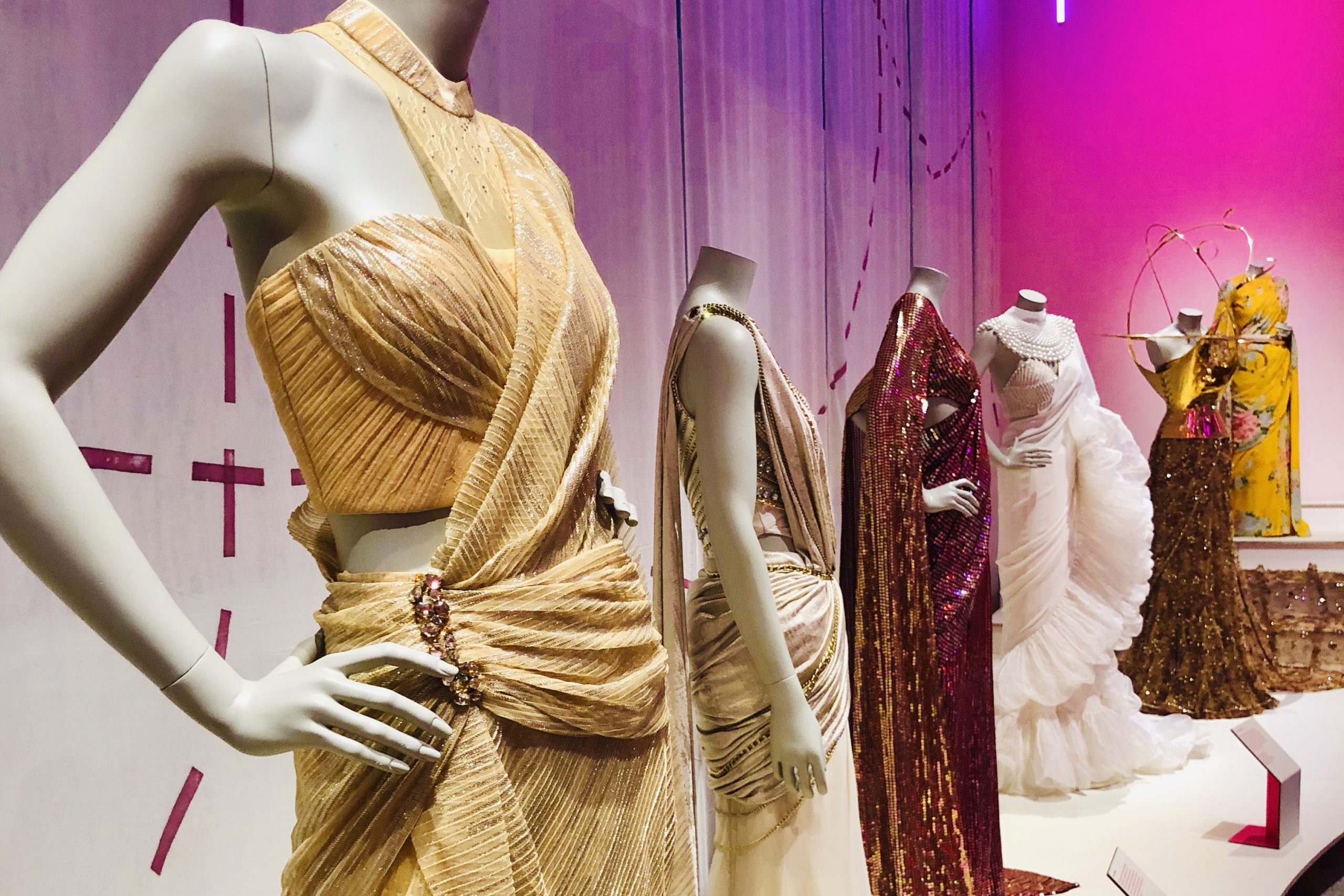STATUS: Upcoming Exhibition in Birmingham’s Midlands Arts Centre (28 June- 2 November 2025), following a run at London’s Design Museum (May – September 2023).
Priya Khanchandani, Head of Curatorial at the Design Museum, is well aware of the myriad historical and social connotations attached to the sari, South Asia’s most popular traditional garment. While “there are a thousand sari stories waiting to be told,” as she herself says, The Offbeat Sari sets out to focus on one particular chapter of a long history by offering a glimpse into the contemporary evolution of this iconic item of clothing.
The sari cannot exactly be said to have gone out of fashion, but for many it didn’t seem to fit an everyday context any longer, especially in very recent times, as some deem it impractical. This is why it began to be subjected to adaptations in order to suit the particular needs of younger generations. This rebirth of the sari is explored through the works of trailblazing designers but also via the creative personal interpretations of the wearers.
The first exhibition of its kind, The Offbeat Sari is divided in three main sections showcasing the designers who are pushing the boundaries, the wearers who are expressing their identities through this garment and even using it as a tool for protest, and finally the craftspeople who apply their incredible skills and a range of techniques to weave, dye and embellish the fabric with intricate patterns.
Highlights include the Sabyasachi ensemble styled with a gold Schiaparelli bodice (the first sari ever worn at the Met Gala); another glamorous showstopper made of golden steel wires by Rimzim Dadu; and a foil jersey sari with Swarovski-encrusted chains by Tarun Tahiliani, worn by Lady Gaga in 2010. There are many other designs to be admired that incorporate denim, pearls, the use of trainers, and other unexpected elements. There is also a range of saris designed as sportswear: a fun way to use traditional wear in a casual and fun context.
A dynamic snapshot beyond stereotypes and borders, the exhibition captures the sari as it shifts through a radical metamorphosis that is both exciting and of great social significance.
Photo Credit: Mersa Auda.
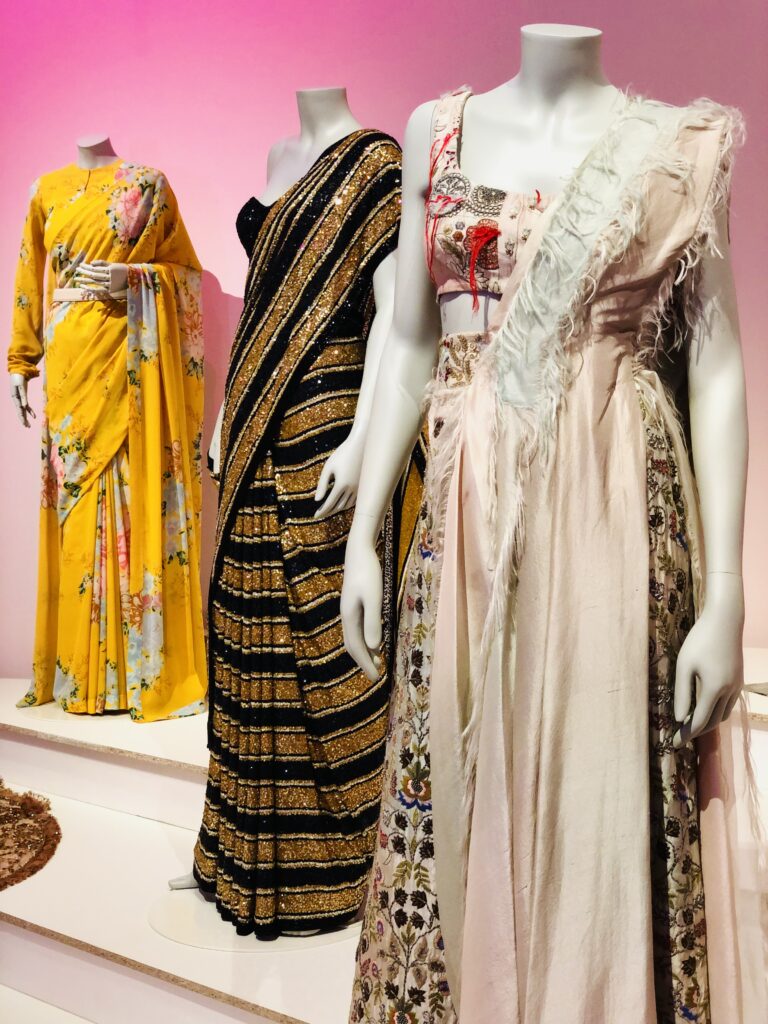
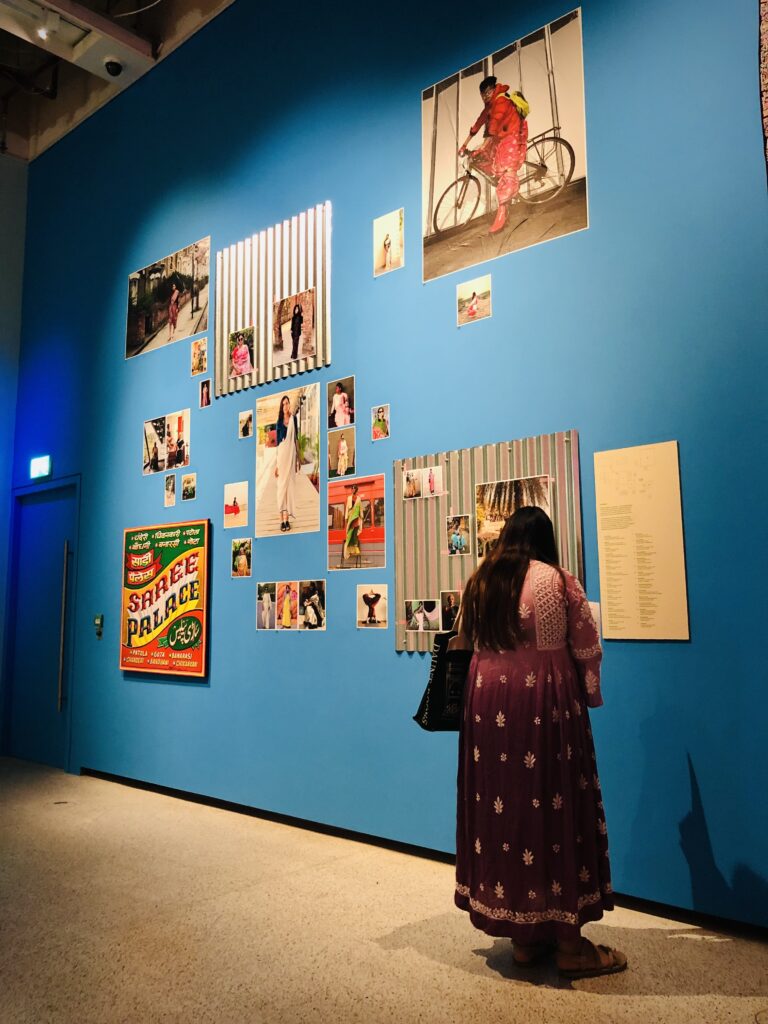
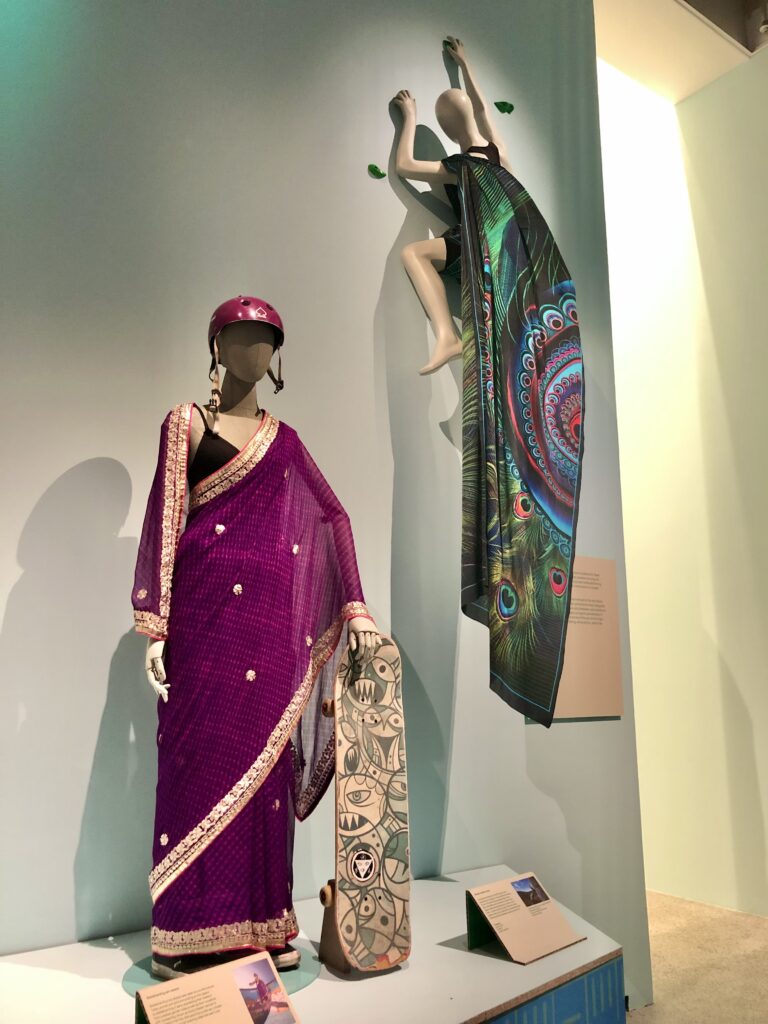
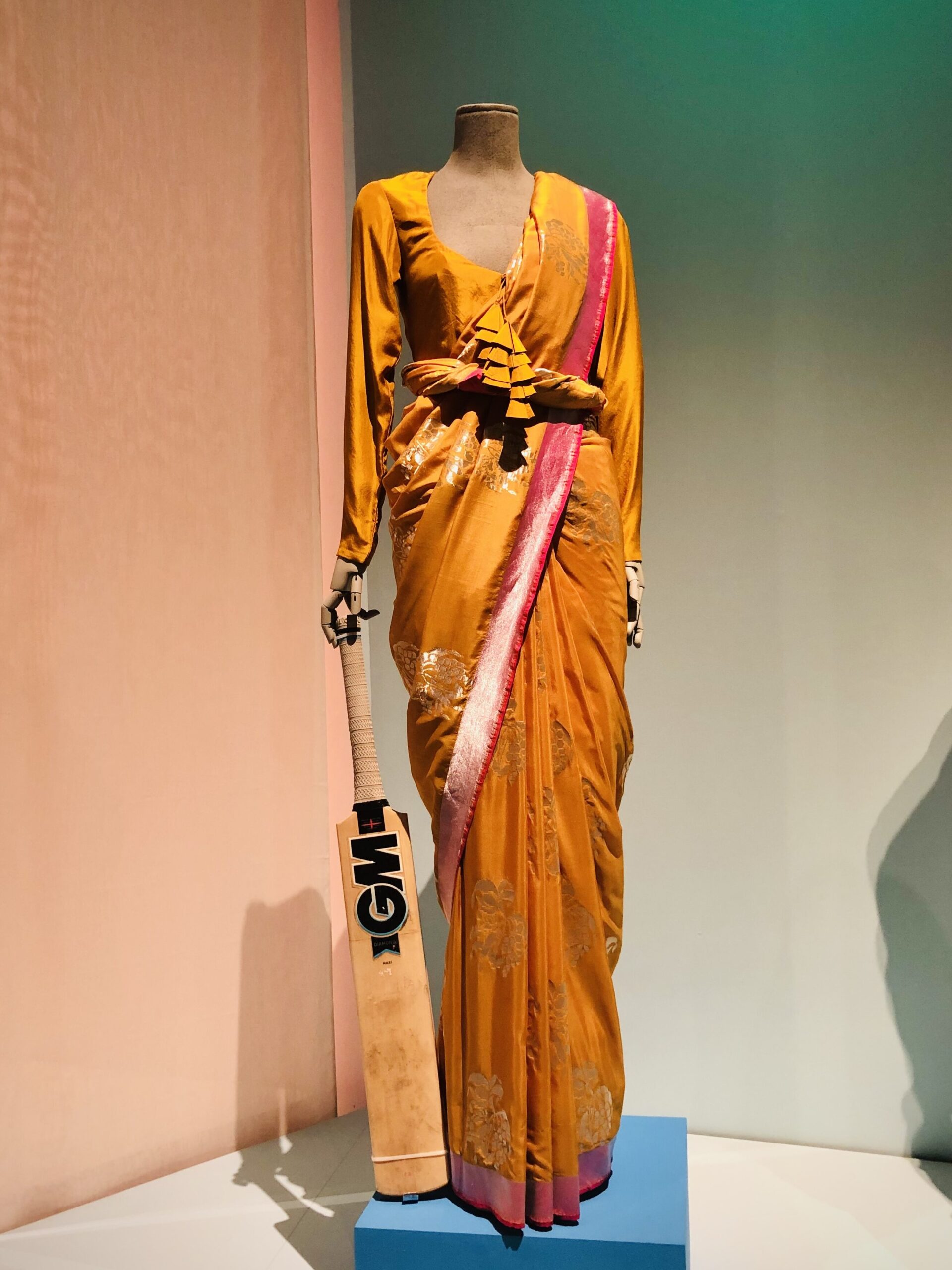
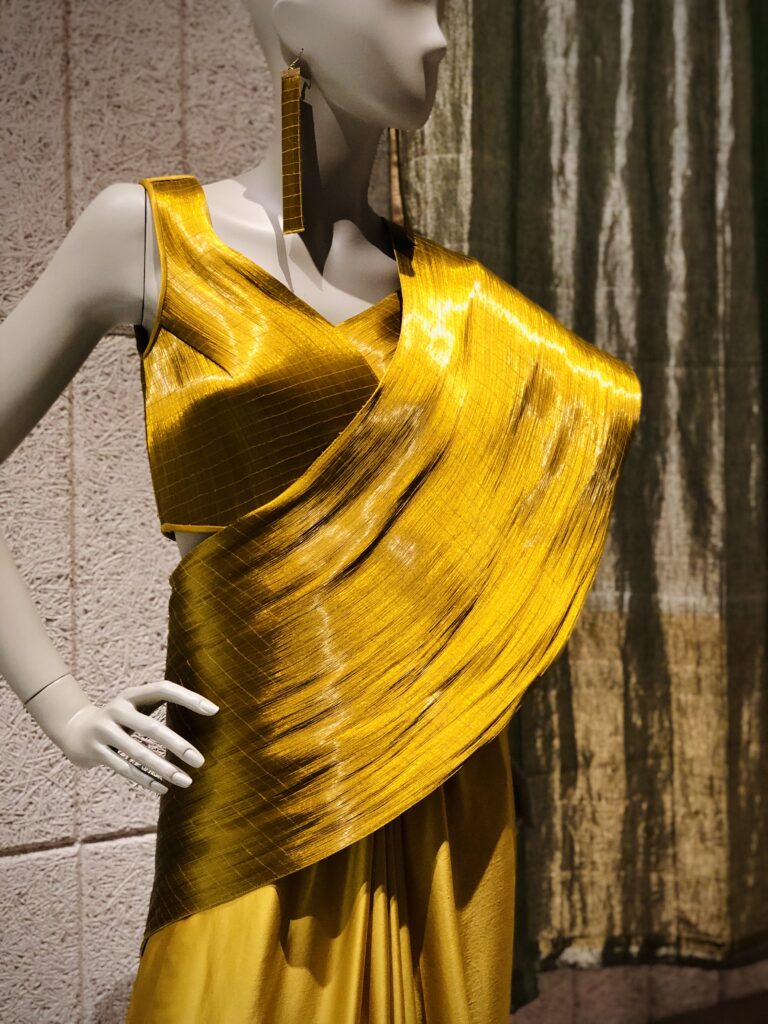
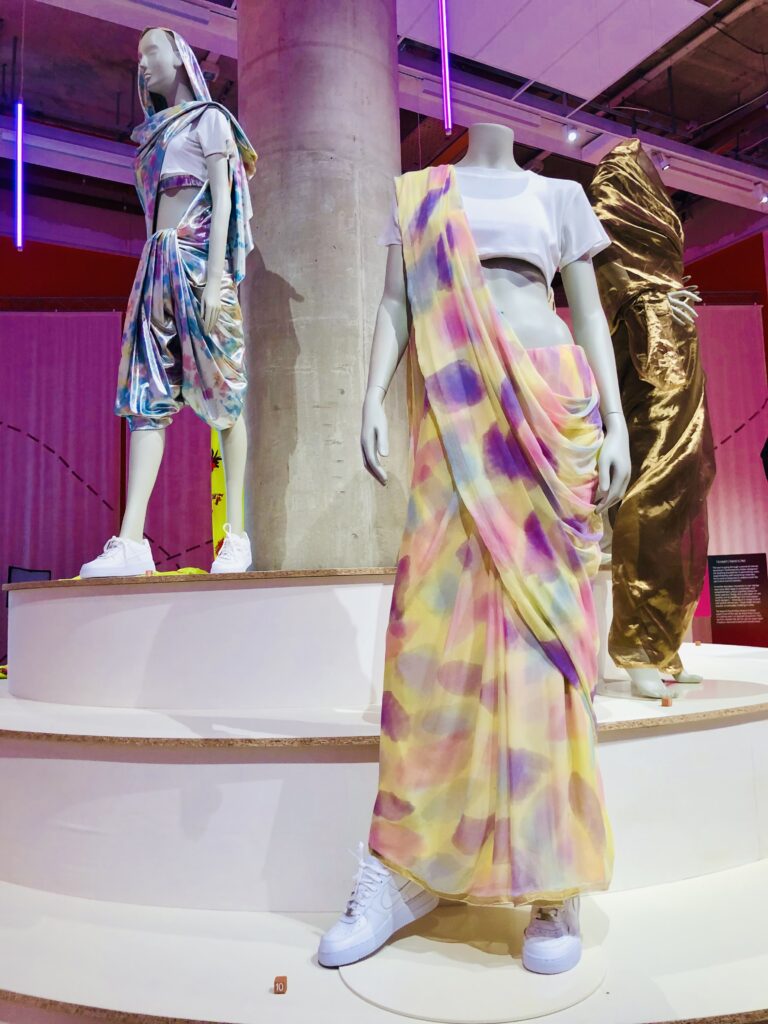
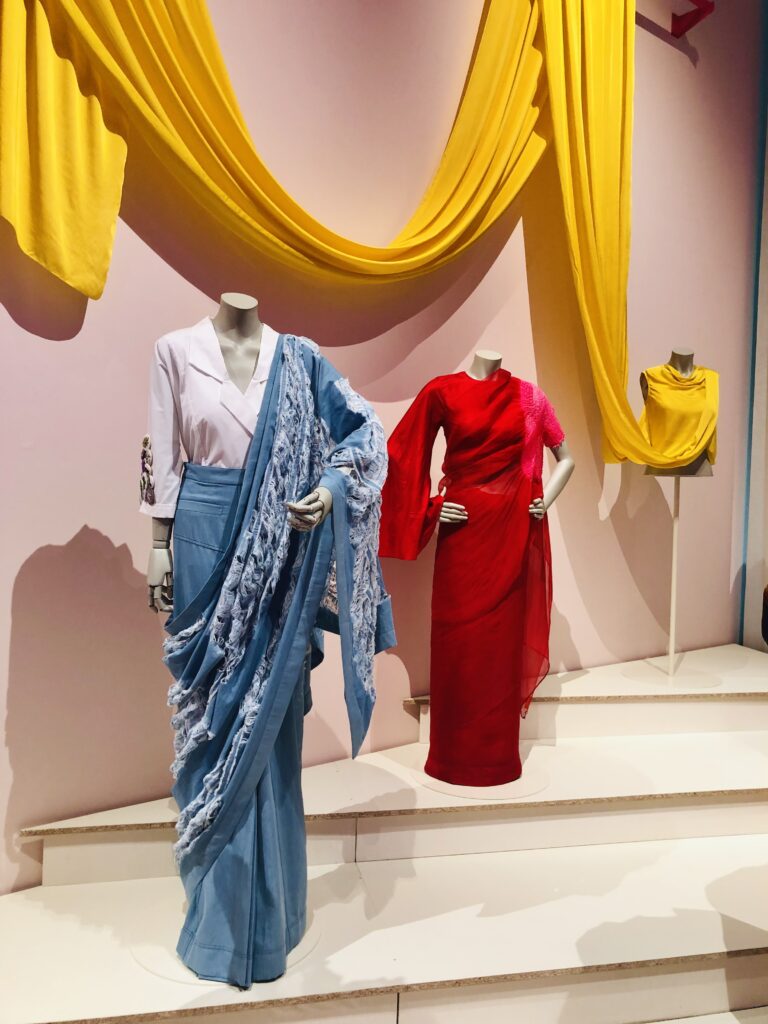

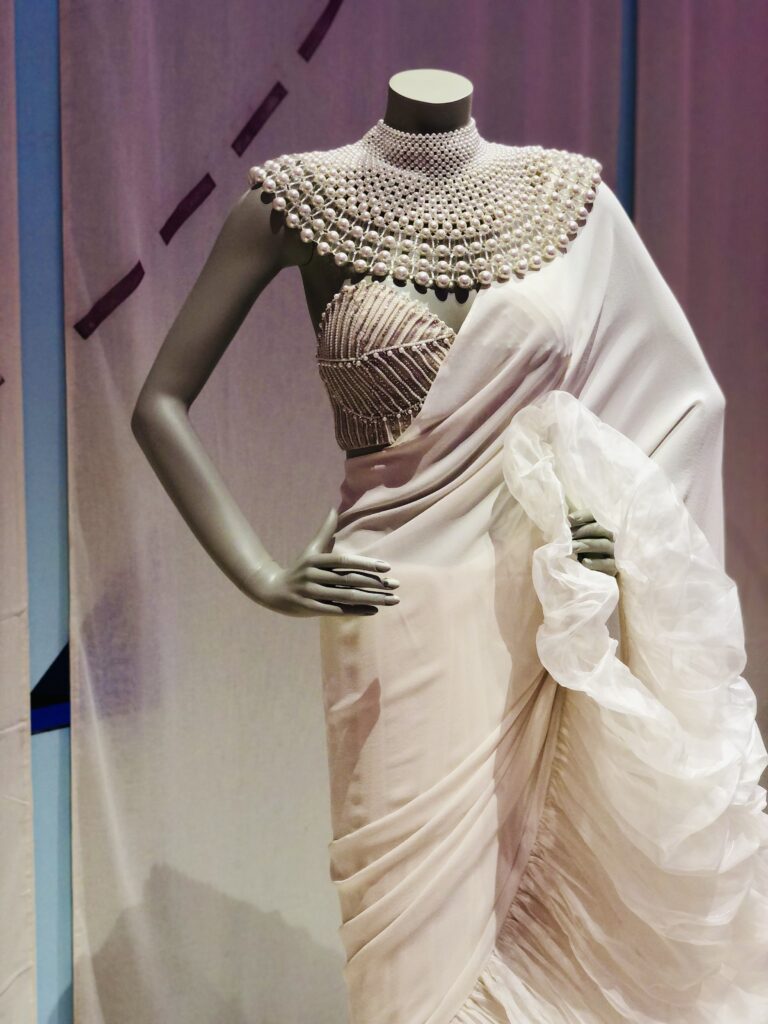
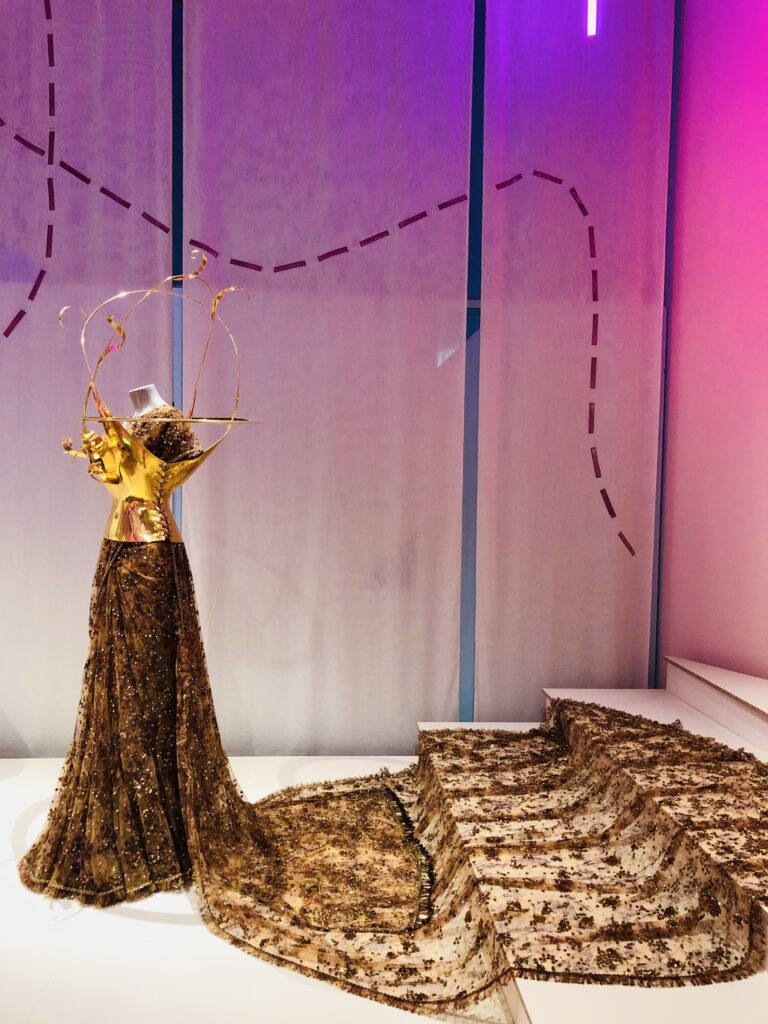
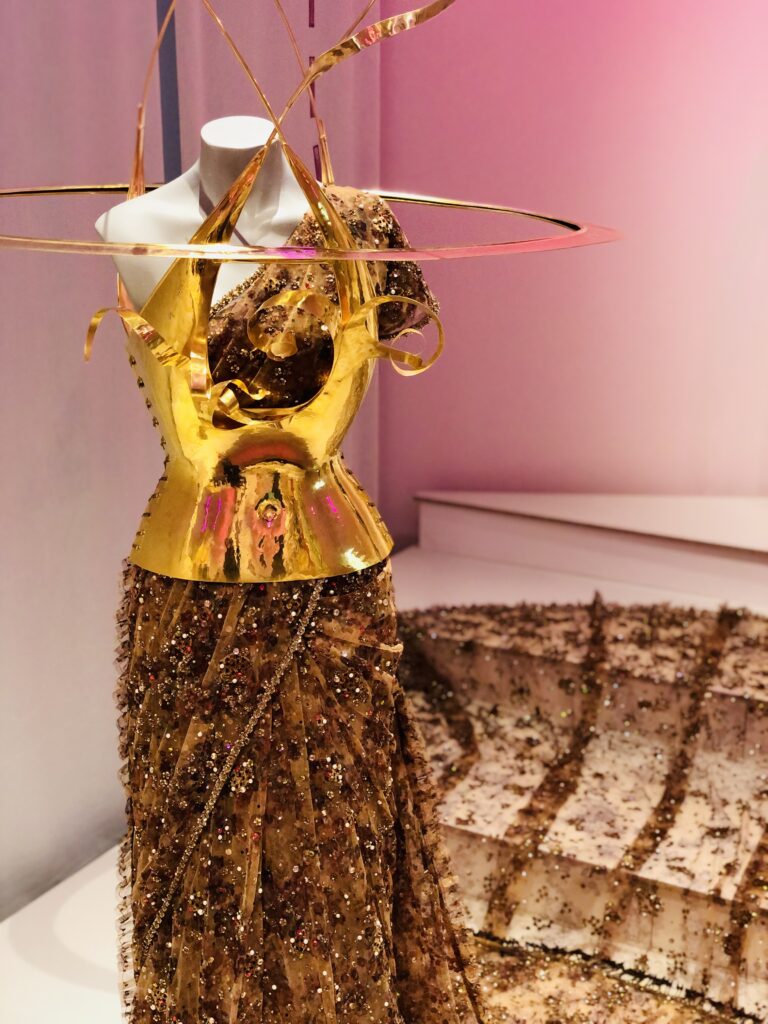
— Mersa Auda


